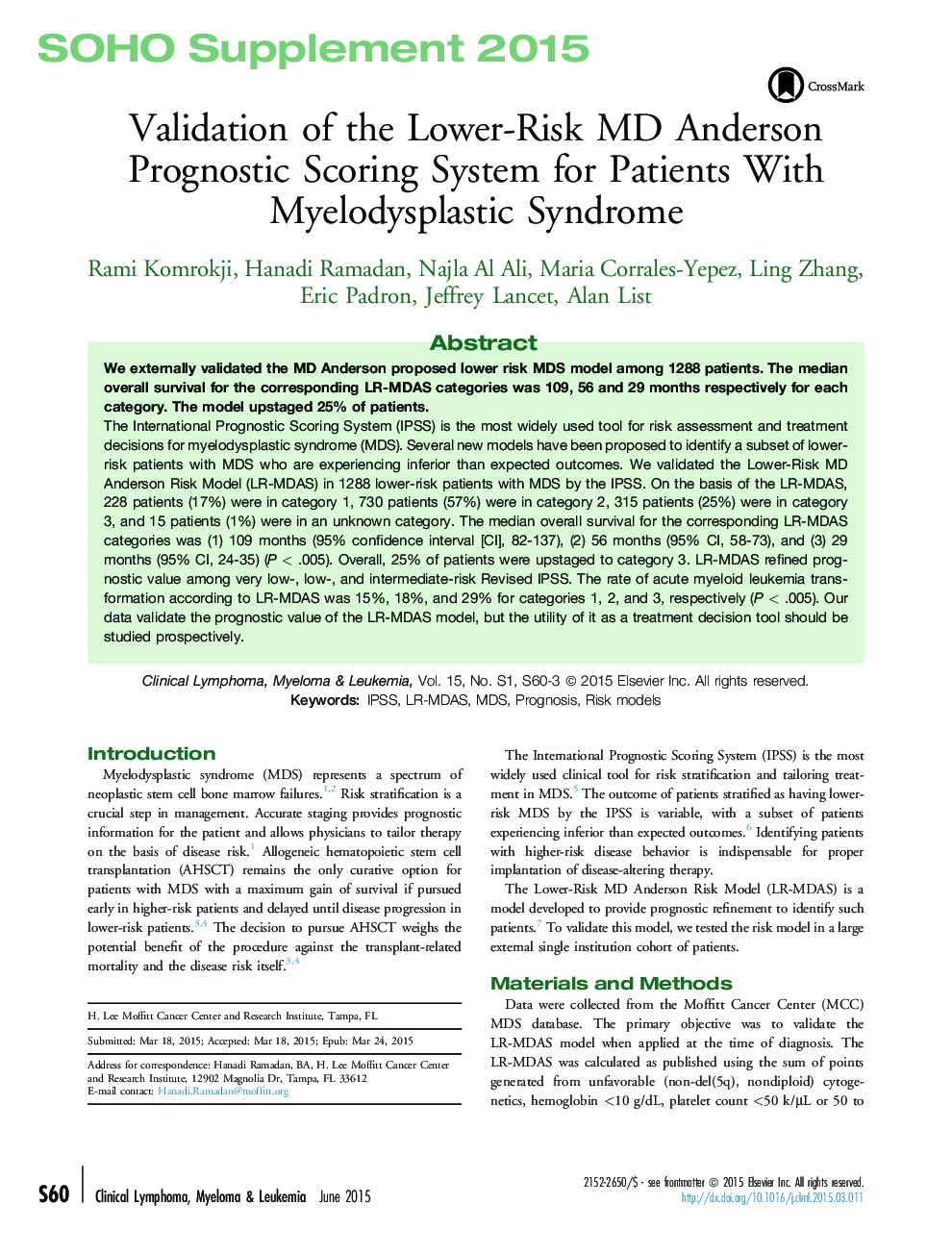| Article ID | Journal | Published Year | Pages | File Type |
|---|---|---|---|---|
| 5883062 | Clinical Lymphoma Myeloma and Leukemia | 2015 | 4 Pages |
Abstract
The International Prognostic Scoring System (IPSS) is the most widely used tool for risk assessment and treatment decisions for myelodysplastic syndrome (MDS). Several new models have been proposed to identify a subset of lower-risk patients with MDS who are experiencing inferior than expected outcomes. We validated the Lower-Risk MD Anderson Risk Model (LR-MDAS) in 1288 lower-risk patients with MDS by the IPSS. On the basis of the LR-MDAS, 228 patients (17%) were in category 1, 730 patients (57%) were in category 2, 315 patients (25%) were in category 3, and 15 patients (1%) were in an unknown category. The median overall survival for the corresponding LR-MDAS categories was (1) 109 months (95% confidence interval [CI], 82-137), (2) 56 months (95% CI, 58-73), and (3) 29 months (95% CI, 24-35) (PÂ < .005). Overall, 25% of patients were upstaged to category 3. LR-MDAS refined prognostic value among very low-, low-, and intermediate-risk Revised IPSS. The rate of acute myeloid leukemia transformation according to LR-MDAS was 15%, 18%, and 29% for categories 1, 2, and 3, respectively (PÂ < .005). Our data validate the prognostic value of the LR-MDAS model, but the utility of it as a treatment decision tool should be studied prospectively.
Keywords
Related Topics
Health Sciences
Medicine and Dentistry
Anesthesiology and Pain Medicine
Authors
Rami Komrokji, Hanadi Ramadan, Najla Al Ali, Maria Corrales-Yepez, Ling Zhang, Eric Padron, Jeffrey Lancet, Alan List,
